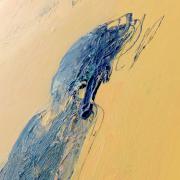
If you have time to take in only one exhibition this summer, Audrey Grant’s at the Union Gallery is a strong contender for your attention.
Spurtle has covered Grant’s work several times before (see 4.3.13) , on each occasion admiring her humane but unflinching studies of the human form. She dwells upon its external and internal flaws, its dislocations and imbalances, finding in these imperfections a kind of vulnerable beauty, even nobility.
Such themes are in evidence again here, although this time often referenced through the work of Rainer Maria Rilke, whose lines are sometimes quoted in the paintings’ titles or scratched onto the surfaces of the works themselves.
Before going any further, let me urge you to get close to Grant's work. Much of the pleasure it gives comes from the energy with which the paint has been applied – thick, delicious swirls and drips and daubs. This is textured in every sense.

The title of this strand of the exhibition comes from the eighth of the Duino Elegies, in which – as C.M. Bowra points out – Rilke simultaneously embraced and lamented the dark side of existence, distress and anxiety.
It begins:
With all its eyes the natural world looks out
into the Open.
Rilke goes on to describe a natural way of being, in
… that pure
unseparated element which one breathes
without desire and endlessly knows.
This is the world briefly inhabited by children, lovers, those very close to death. It’s the world as momentarily experienced in moments of feral connection:
… when some animal
mutely, serenely, looks us through and through.
… But it feels its life as boundless,
unfathomable, and without regard
to its own condition: pure, like its outward gaze.
And where we see the future, it sees all time
and itself within all time, forever healed.
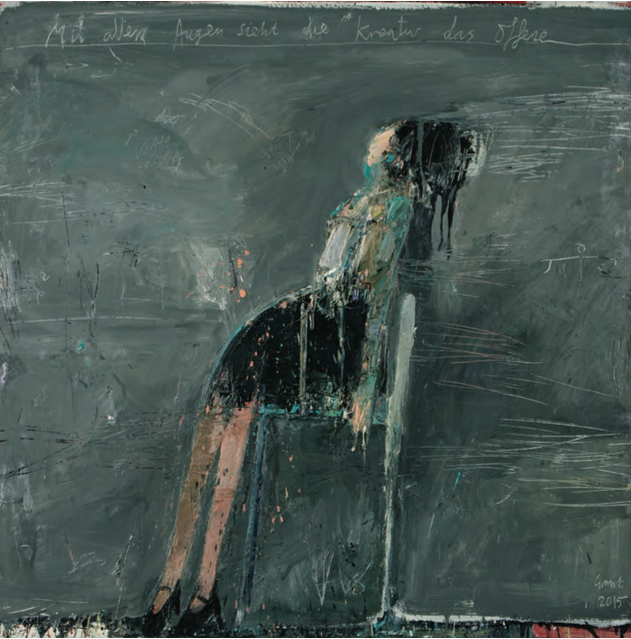
By contrast, Rilke sees humans as too often contorted, introspective, weighed down by a sense of time and approaching extinction. These, perhaps, are some of the same twisted and misshapen subjects of Grant’s earlier studies.
In this exhibition, however, it seems to me that she has moved on. Her figures now appear more self-assertive, fluent, sometimes even graceful.
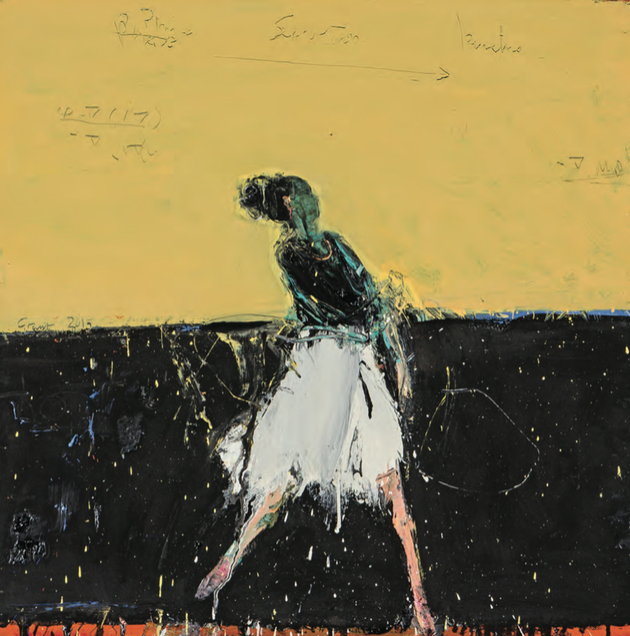
They have begun to turn out of two-dimensions, to achieve a clarity of vision, a lightness, a flight which Rilke said was attainable through candid and whole-hearted immersion in art. These are the sentiments of his Sonnets to Orpheus, echoed in Grant's 'Look at the flowers' …
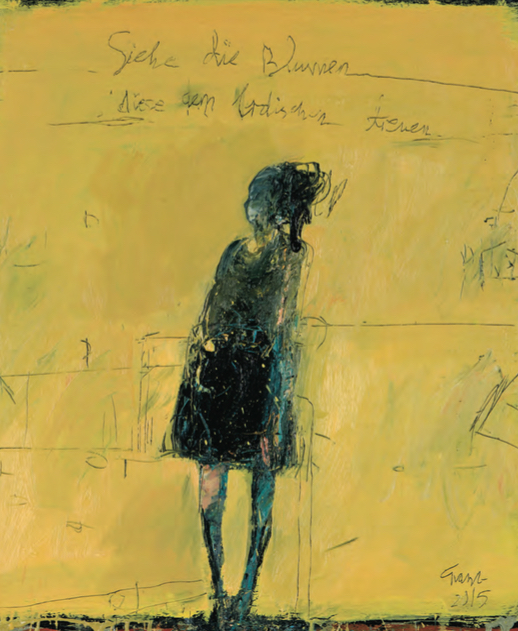
... an exhortation to stop being 'enthralled with our own heaviness' and instead join 'all those companions in the wind of the meadows'.
Art as apotheosis, argues Rilke, transforms experience, turns Lament into Praise:
Yet awkward as she is, she suddenly
lifts a constellation of our voice,
glittering, into the pure nocturnal sky.
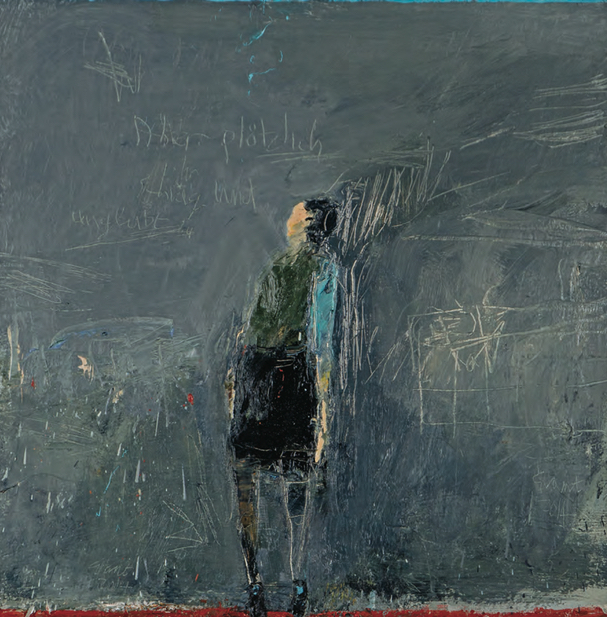
The first strand of this exhibition is a kind of creative dialectic across time and genres, and the same could be said of the second: 'Natural Philosophy'.
Here, 'phrases, diagrams and mathematical symbols' extracted from the notes of Professor Mike Cates FRS (an Edinburgh University academic), are incorporated into reworked photographs which Grant took earlier this year of the sea at Gamrie Bay.
Science and art combine to describe flow: be it flow in the water, sea mist, emulsions, paint, or more abstractly in the results of human intervention.
The generous application of lithium grease or latex confounds one's expectations of the flat photograph, of the captured image it contains.
And so there is in these works on paper another kind of transformative process ...
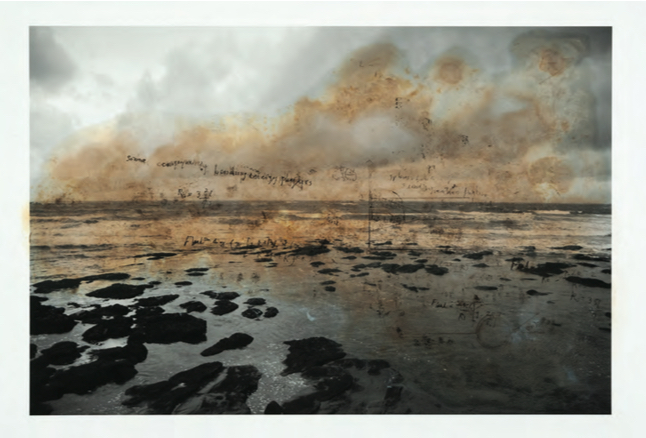
an attention to the almost alchemical possibilities of photographic development, advances in knowledge, shifts in perspective.
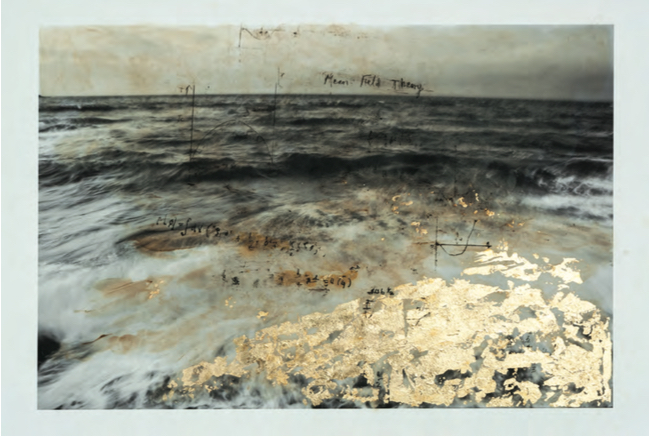
In this way, whilst apparently very different, the two halves of Grant's exhibition are complementary and form a whole. They both address the texture of creative change.
The works on show here challenge, occasionally baffle, but are consistently exciting and often very beautiful. You don't need to read Rilke or to study Natural Philosophy to enjoy them – ultimately, they speak for themselves. Do go and see them.—AM
Audrey Grant's exhibition continues at the Union Gallery (45 Union Street) until 7 September. Admission free.
Images from top to bottom: Details of 'Siehe die Blumen' (Look at the flowers), 'Mit allen Augen sieht die Kreatur das Offene' (With all its eyes the natural world looks out into the Open); 'Mit allen Augen ...'; 'Tanzerin III'; 'Aber plötzlich ...' (Yet awkward as she is ...); 'Some consequences of energy bending physics''; 'Mean field theory'.